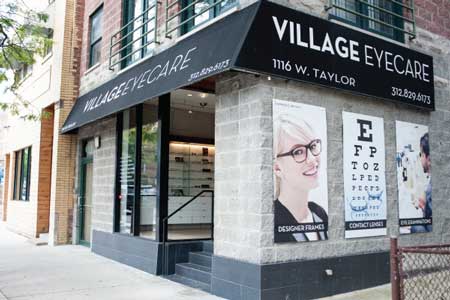Family Eye Doctors in Andalusia: Comprehensive Vision Care
Family Eye Doctors in Andalusia: Comprehensive Vision Care
Blog Article
Understanding the Various Vision Modification Procedures Available for Clearer Sight
In the realm of vision improvement treatments, a plethora of options exist to address refractive errors and supply people with more clear view. From the commonly recognized LASIK surgical treatment to less intrusive treatments like PRK and implantable lenses, the area of ophthalmology supplies a variety of techniques tailored to suit different demands and choices. Each treatment comes with its very own collection of considerations, advantages, and possible dangers. Comprehending the subtleties of these vision adjustment techniques is essential for making educated choices about one's aesthetic health and wellness. Allow's discover the details of these treatments and dropped light on the course to achieving boosted vision quality.
LASIK Surgical Treatment
LASIK surgery is an usual refractive treatment used to deal with vision problems such as farsightedness, astigmatism, and nearsightedness. This surgical strategy, which stands for Laser-Assisted in Situ Keratomileusis, intends to reshape the cornea to improve how light is concentrated on the retina, eventually boosting vision clearness. Throughout the treatment, a slim flap is produced on the cornea, and a laser is made use of to get rid of specific amounts of cells to improve it properly. This improving permits light to be properly focused onto the retina, dealing with refractive mistakes.
One of the primary advantages of LASIK surgical procedure is the rapid enhancement in vision experienced by patients. Overall, LASIK surgery is a preferred choice for individuals seeking a long-term remedy for their vision issues.
PRK Procedure

PRK is a suitable choice for people with slim corneas or those at a greater risk of eye injuries, as it does not include developing a corneal flap. The recovery process for PRK is somewhat longer contrasted to LASIK, as the epithelium needs time to regrow. Patients might experience pain and blurred vision for a few days following the procedure.
Regardless of the longer healing time, PRK can generate superb cause vision improvement, making it a valuable choice for those that might not be appropriate candidates for LASIK surgery. - Neurologist Andalusia
Implantable Lenses
In comparison to PRK where the cornea is reshaped directly, implantable lenses use an additional method for fixing vision by placing fabricated lenses inside the eye. This treatment is specifically beneficial for individuals with high degrees of farsightedness, astigmatism, or nearsightedness that might not be ideal prospects for laser surgical procedures like LASIK or PRK.
Implantable lenses, additionally called phakic intraocular lenses, work by supplementing the eye's natural lens with a man-made one. These lenses can be positioned before the all-natural lens (anterior chamber) or behind the iris and before the natural lens (posterior chamber) By changing the power and positioning of these lenses, ophthalmologists can effectively fix refractive mistakes and enhance aesthetic acuity.
One advantage of implantable lenses is that they are detachable and exchangeable, providing adaptability for future changes. Nevertheless, just like any operation, there are threats entailed, such as infection or cataract development. People considering implantable lenses ought to speak with an eye care professional to identify the most ideal option based on their individual demands and eye health.
Corneal Rings

The procedure for placing corneal rings is relatively quick and minimally invasive, commonly executed as an outpatient procedure. During the surgical treatment, the ophthalmologist makes a little cut in the cornea and inserts the rings at a details deepness. As soon as in position, the rings help to reshape the cornea, providing a smoother surface area for light to get in the eye, which can cause more clear vision.
Corneal rings are considered a relatively easy to fix procedure, as they can be eliminated or replaced if necessary. While they may not totally eliminate the need for glasses or contact lenses, corneal rings can considerably improve vision quality and overall visual convenience for people with keratoconus or other corneal irregularities.
Refractive Lens Exchange
Adhering to the correction of corneal irregularities with procedures like corneal rings, an additional vision improvement strategy that can deal with refractive errors is Refractive Lens Exchange (RLE) RLE is a surgical treatment that includes replacing the eye's natural lens with a fabricated intraocular lens (IOL) to correct refractive errors such as farsightedness, nearsightedness, and presbyopia. This procedure is specifically useful for individuals that might not be appropriate prospects for procedures like LASIK or PRK due to variables such as thin corneas or high refractive mistakes.
Recovery time for RLE is relatively quick, and individuals can anticipate improved vision soon after the procedure. As with any type of medical treatment, potential dangers and difficulties exist, so an extensive appointment with an eye care expert is necessary to identify if RLE is the appropriate vision adjustment alternative.
Final Thought

In the realm of vision blog correction treatments, a plethora of alternatives exist to resolve refractive mistakes and supply people with more clear sight.LASIK surgery is a common Click Here refractive treatment made use of to deal with vision problems such as farsightedness, nearsightedness, and astigmatism.While likewise an usual refractive treatment, the PRK (Photorefractive Keratectomy) method differs from LASIK surgery in its strategy to dealing with vision issues.Adhering to the modification of corneal abnormalities with procedures like corneal rings, an additional vision correction method that can resolve refractive errors is Refractive Lens Exchange (RLE) LASIK surgical treatment, PRK procedure, implantable lenses, corneal rings, and refractive lens exchange are all options that can attend to various vision problems.
Report this page